 |
|||||
 |
 |
||||
 |
|||||
 |
 |
||||
The optics of a late 18th Century compound microscope; the Pyefinch compound microscope |
||||||||||||||||||
|
Modeling
|
||||||||||||||||||
 |
Due to limitations in methods of production, lenses of the distant past had poorly crafted edges. To reduce the extent of aberrations small apertures were used to ensure light would only pass through the center of the lens. A small aperture, however, compromises the potential resolution of the microscope, posing a tradeoff between the extent of aberrations and the limit of resolution. | |||||||||||||||||
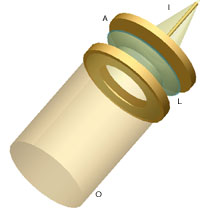 |
||||||||||||||||||
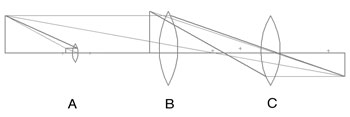 |
||||||||||||||||||
|
Objective lens (L) and aperture (A). Outer rays from object (O) are blocked by the aperture (I). The effect is to reduce spherical aberration.
|
||||||||||||||||||
| This microscope has one aperture for each lens: A: objective lens; B: field lens; C: eyepiece lens. | ||||||||||||||||||
|
|
||||||||||||||||||
| Magnification and Resolution | 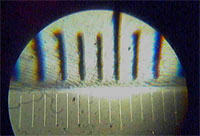 |
|||||||||||||||||
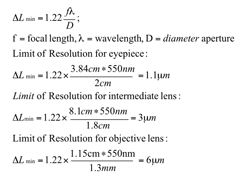 |
Micrometer (bottom) for estimating magnification, Ruler (top)
|
|||||||||||||||||
| 4 divisions of the ruler (4*2.54cm) lined up with 7 divisions of the micrometer (7*100 micron). Experimental: MT = (0.0127 (meter) /7 (division))/e-4 = 18.14 Theoretical MT= 10.33–25x (lowest power objective) Resolution = 6µm |
||||||||||||||||||
|
|
||||||||||||||||||
| Chromatic Aberration | ||||||||||||||||||
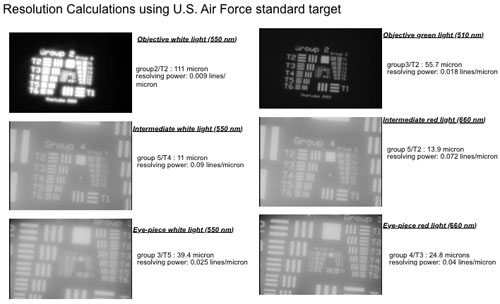 |
Resolution targets imaged with white light or monochromatic light. Blur is indicative of chromatic aberration exhibited by all three lenses of the microscope.
(How they determined this.) |
|||||||||||||||||
| Imaging | ||||||||||||||||||
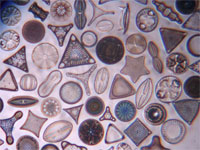 |
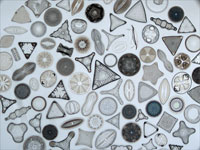 |
Images of diatoms taken through the Pyefinch microscope (L) and a modern compound microscope (R).
|
||||||||||||||||